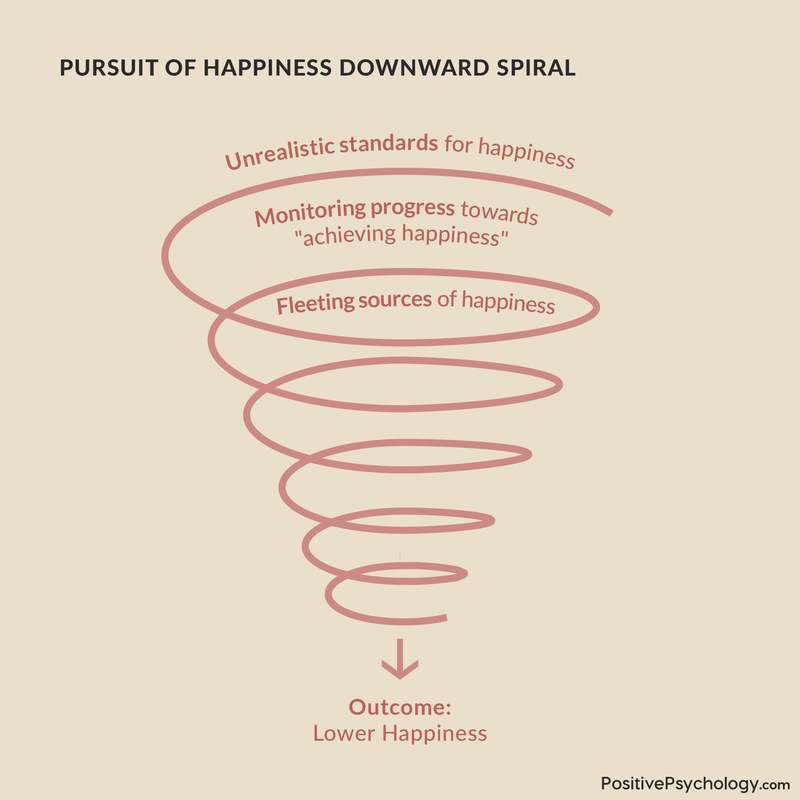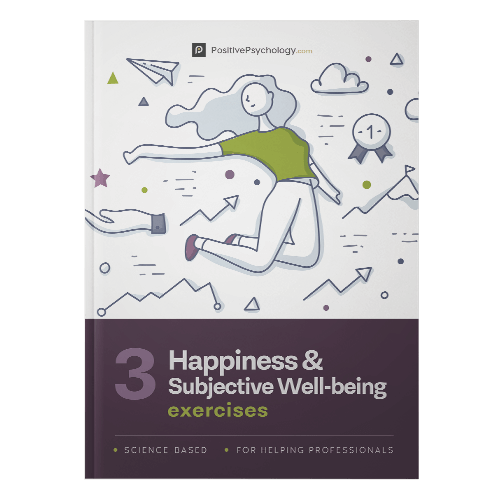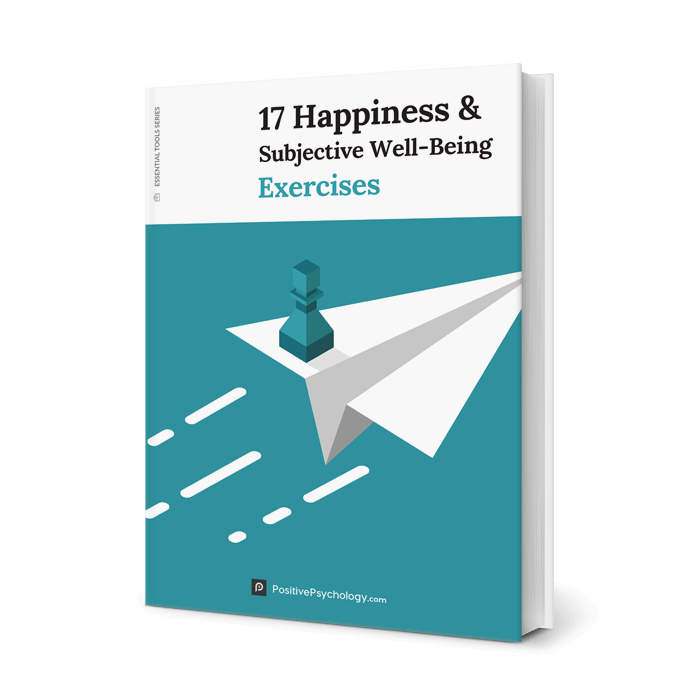Can You Be “Too Happy”? A Look at Unhealthy Happiness
 One of Aesop’s most quoted lines goes, “It is possible to have too much of a good thing.”
One of Aesop’s most quoted lines goes, “It is possible to have too much of a good thing.”
Another version of this line states “too much of a good thing is a bad thing”. We have all used these lines at one point in our lives. We also know how true these are for almost everything, may it be food, money, leisure, or work.
If these lines are true for so many different areas of life, does this mean that it is also true for happiness? Is there such a thing as unhealthy happiness??
Happiness is generally perceived to be a good thing. We spend a great deal of time pursuing things we believe will make us happy. It is also a common belief that we can all benefit from becoming happier. With the numerous studies available that show happiness and positive emotions are important, how can happiness become a bad thing?
Keep reading to find out how happiness can actually have a dark side and how being too happy can have a negative impact on our lives.
Before you continue, we thought you might like to download our three Happiness & Subjective Wellbeing Exercises for free. These detailed, science-based exercises will help you or your clients identify sources of authentic happiness and strategies to boost wellbeing.
This Article Contains:
- Why Too Much of a Good Thing is a Bad Thing
- Is There a Dark Side to Happiness?
- Is it Possible to be Too Happy and Positive?
- The Timing of Happiness
- The Pursuit of Happiness
- The Types of Happiness
- The Side Effects and Disadvantages of Excessive Happiness
- How Can we Best Avoid the Dark Side of Happiness?
- A Take-Home Message
- References
Why Too Much of a Good Thing is a Bad Thing
There are many everyday examples to show how too much of a good thing is actually bad for you. Dr. Robinson (2018) published an article on WebMD that talks about 12 Good Things That Can Go Bad.
She shares how too much exercise can damage our joints and even lead to osteoporosis in women. On the other hand, sleeping beyond the recommended eight hours can increase the risk of heart problems.
Activities like having sex, washing your hands, and eating healthy food, when done excessively, can all lead to serious health problems. She even explains that drinking too much water, to its extreme, can lead to death.
Riggio (2013), in his article Too Much of Anything is Bad For You, focuses on personality traits, skills, and abilities to demonstrate how a good thing can become a bad thing.
He talks about how things such as self-confidence, conscientiousness, and intelligence, when taken to an extreme, can become maladaptive behaviors.
Self-confidence can come across as arrogance or narcism, while a person who is overly conscientious, can be perceived as a perfectionist.
Even being extremely intelligent, especially with leaders, can contribute to the leader being ineffective because his followers may find it challenging to connect with him.
Is There a Dark Side to Happiness?
Happiness is positively correlated with so many different experiences such as achieving goals, creating good social connections, maintaining relationships and friendships, learning, and even increasing our own wellbeing.
Despite the many good things happiness brings to our lives, recent studies show that happiness has a dark side.
In 2011, Gruber, Mauss, and Tamir published their study titled “A Dark Side of Happiness? How, When, and Why Happiness Is Not Always Good”.
Their study talks about how the pursuit of happiness does not always contribute to positive outcomes. Gruber and colleagues focused on four aspects of how happiness can have a dark side: intensity, timing, the pursuit of happiness, and types of happiness.
Is it Possible to be Too Happy and Positive?
Intensity is the first aspect that Gruber and colleagues looked at when talking about happiness. Intensity refers to the “degree or amount of strength that something has” (Merriam-Webster, 2019). When something is said to be “intense” it usually means there is a sense of being extreme or too strong. In this case, “too happy” or “too positive” can mean an intense level of happiness.
Contrary to popular beliefs, studies have shown that excess levels of experiences, emotions, and mental states can lead to becoming unhealthy (Gruber et al., 2011). This applies not only to negative experiences but also positive states like happiness.
Research has found that intense degrees of happiness may be costly as it can lead to negative outcomes instead of benefiting us (Oishi, Diener, & Lucas, 2007). Scott Crabtree, in his Thrive From 9-5 Online Course, mentions that the ideal number for self-reported happiness is an 8 out of 10, with 10 being always happy.
He explains that a person who is extremely happy, and always happy, may not be completely in touch with reality. This disengagement from reality, as a person experiences intense levels of happiness, may lead to risky behaviors and dysfunction in certain areas of our life.
Moderate levels of happiness allow room for us to be able to still experience unpleasant emotions. These unpleasant experiences help us to learn and grow from them and to keep moving forward.
The Timing of Happiness
Just as the degree of happiness is important, timing is also an important aspect to consider. Gruber et al. state that happiness can also lead to negative outcomes when experienced in all situations. They also identified that there is likely a right time to feel happy, as well as a right time to experience negative emotions since emotions have an adaptive and functional role.
Positive emotions, as identified in numerous studies, plays an important role in many contexts. Gratitude likely biases our attention towards rewards instead of seeing a threat in a situation. It can help us see the silver lining even in the midst of failure.
The expression of gratitude also facilitates positive social interactions and signals the other person to respond with “you’re welcome” when a “thank you” is heard. Gratitude can also contribute to increasing the positive emotions of the other person.
Gruber and colleagues looked at different studies to see how emotions play a role in the cognitive, physiological, and social perspectives. They identified specific situations for the three perspectives where negative emotions can be more beneficial than positive emotions.
The cognitive perspective sees emotions as a filter that influences the way we gather, process, and interpret information. The way we feel impacts the information we attend to, as well as our cognitive processes like decision making, judgment, and creativity (Dalgleish & Power, 1999; Forgas, 2001; Martin & Clore, 2001, as cited in Gruber et al.).
The physiological perspective looks at emotions as a trigger for action in a given situation. Our emotions cause a physical response which prepares our body to act on a specific stimulus (Ekman, 1992; Levenson, 2003; Plutchik, 1980, as cited in Gruber et al.).
Lastly, the social perspective considers how emotions affect the way we interact and relate with people. Numerous studies show that the way we feel can help contribute to the response we elicit from others, to how we respond to others, and to how the social interaction plays out.
On the other hand, negative emotions, such as experiencing fear, can help us to respond appropriately to a situation, specifically when we are in the context of a serious threat. On a cognitive level, fear helps us to pay attention to our surroundings and to possible threats around us.
The fear we experience allows us to judge the situation and make decisions in order to deal with the threat. The physical response to fear causes our heart rates to rise as blood is pumped at a faster rate through our body (Cacioppo, Berntson, Larsen, Poehlmann, & Ito, 1993, as cited in Gruber et al.).
Together, our brain and body prepare us to get into a fight or flight response if the need arises. Socially, expressing fear may evoke concern from others and signal them to help or provide assistance. Our fear can also limit our interactions with individuals we perceive to be a possible threat.
The lack of fear, when faced with a threat, may prove to be detrimental since it prevents us from responding appropriately. Cognitively, we may not properly assess possible threats around us.
When we are not afraid, our bodies also do not prepare for a fight or flight response which may cause a delay in action. Lastly, the people around us are likely to be unaware that we need help. It is also highly likely that because we are not afraid, we also do not know that we actually need help from others.
The Pursuit of Happiness
There are two main things that can come to mind when we talk about pursuing happiness. The first one is the idea that “I need to be happier”. The second one sounds more like “I should always be happy”.
Crabtree states that when we become desperate as we pursue happiness, or when we try too hard to become happy, the pursuit backfires and eventually works against us.
Similarly, Kesebir and Diener (2008) found that pursuing happiness can result in a paradoxical outcome. This means that the more a person pursued happiness, the more challenging it was to achieve it.
Gruber and colleagues relate these paradoxical effects with those connected to achieving goals. They cite Carver and Scheier’s (1981) study where they found that the goals we set often come with specific standards. We use these standards to evaluate the way we achieve the goal and the actual achievement of this goal. These standards also tend to leave us disappointed.
The paradox of pursuing happiness often comes with an expectation of what that happiness looks like and a standard of how we should feel when we achieve that happiness. It can likely become a never-ending self-defeating cycle.
On the other hand, Gruber and colleagues suggest that there are specific ways to pursue happiness that do not involve directly pursuing it. These may even be more effective at increasing our happiness levels. Check out the Types of Happiness section below to find out what these activities are and how we can avoid that dark side of happiness. This idea that the pursuit of happiness might be harmful seems like a counter-intuitive idea, right? Despite this, several lines of research support the idea that the pursuit of happiness might lead us down a harmful path. In fact, the more individuals pursue positive emotions such as happiness, the less likely they are to experience said positive emotions and improvements to their wellbeing (Mauss, Savino, et al., 2011; Mauss, Tamir, Anderson, & Savino, 2011; Schooler, Ariely, & Loewenstein, 2003). But why is this the case? Researchers suggest that the direct pursuit of happiness prompts individuals to set unrealistic standards for happiness, focus on fleeting sources of happiness and excessively monitor their progress towards achieving their happiness goal (Ford & Mauss, 2013). Ultimately, these pressures paradoxically make it more difficult to experience happiness, and could lead to a downward spiral that moves us further and further away from feeling happy. However, this framework doesn’t mean that actively searching for happiness is useless. It just acts as a reminder to check in with ourselves to make sure our happiness standards aren’t entirely unrealistic. Further, it prompts us to consider where our happiness comes from and whether it would be useful to direct our attention to more meaningful sources. Finally, it nudges us to stop monitoring how far away we are from being the happiest version of ourselves and instead remember the power of simply experiencing joy as it happens.

The Types of Happiness
Finally, two types of happiness were explored (Gruber et al.) based on their working definition of happiness which states that happiness is when a person experiences only positive emotions.
The first type is the happiness that impairs social functioning. Numerous studies have found that good social relationships contribute to our overall wellbeing (Rath & Harter, 2010).
When a positive emotion impairs our social interactions, there is a high likelihood that our wellbeing decreases. An example they cited is that of pride, which is generally a positive emotion. A maladaptive form of pride may lead to arrogance and even aggressive behavior. These are likely to cause friction between the proud person and those around him.
The second type of happiness they identified is the one that does not align with cultural values. Because cultures vary from each other, a specific positive emotion may be viewed differently among countries.
They considered three dimensions such as the level of arousal, the social engagement aspect of emotions, and personal hedonic experiences.
They cite numerous studies showing how different cultures differ in terms of their value of these three dimensions and the possible effects of these.
They suggested that these two types of happiness may lead to possible negative effects, instead of contributing exclusively positive outcomes.
Why humans are surprisingly bad at being happy – The Well
The Side Effects and Disadvantages of Excessive Happiness
In addition to those already mentioned earlier, here are a few more examples, studies, and interesting facts that show how being too happy can have its disadvantages.
3 Examples of Happiness Being Negative
Being too happy can make you…
1. Pay less attention to details
An experiment conducted on kids ages 6 to 7 and 10 to 11 found that extreme happiness may have negative effects on a child’s performance, specifically with detail-oriented tasks. (Schnall, Jaswal, & Rowe, 2008).
Happier kids took more time to locate embedded figures based on images that were shown to them. Happier kids also found less embedded figures as compared to those that were induced into a neutral or sad mood.
Schnall and colleagues explained that their results may likely be due to the fact that happiness tells us that things are good. When things are good, we are more likely to process global information first instead of local information. This means that we see the whole picture first before paying attention to the details in the picture.
When we are in a neutral or sad state, it tells us that something might be missing or be wrong. This triggers to go through a more analytical process and pay more attention to details.
Their results were consistent with that of another study done with adults, wherein participants either classified geometric figures or replicated a drawing from memory (Gasper & Clore, 2002). This study found that happier participants tended to pay more attention to the global features of a drawing or of the geometric figures present to them.
2. Less creative
Studies have shown that positive emotions are likely to promote creative and innovative ideas (Fredrickson, 2004). There is also evidence that shows how happiness and creativity positively correlate with each other (Adobe Systems Incorporated, 2016). However, these may only hold true for moderate levels of happiness.
Davis (2009) found that while happiness can boost creativity, we no longer experience that same boost when we experience intense happiness. Scientists found that creativity builds on 14 different components (Jordanous & Keller, 2016) which seem to be related to problem-solving.
When we are extremely happy, our brains zone in on the physical manifestations of happiness and on enjoying that happy moment instead of problem-solving (O’Faolan, 2016). It is possible that when we are too happy, our brains cannot go into problem-solving mode, thus making us less creative.
3. Take more risks
Gruber (2012) explains that when we experience positive emotions, we are likely to focus on things that will sustain that happiness. We become more adventurous and more likely to take risks to find ways that sustain these good feelings.
Cyders & Smith (2008) found that extreme positive emotions can increase our likelihood to engage in risky behaviors like binging on food and alcohol, using drugs and other substances, as well as engaging in risky sexual behavior.
Research and Studies
The Pursuit and Assessment of Happiness can be Self-Defeating (Schooler, Ariely, Loewenstein (2003)
According to the researchers, the more we try to make ourselves happy, the less happy we feel. Some of the participants in this study were asked to make themselves feel as happy as possible while they listened to a certain type of music. Those who did not receive this instruction reported feeling more positive emotions than those who were told to make themselves as happy as possible.
Can Seeking Happiness Make People Unhappy? Paradoxical Effects of Valuing Happiness (Mauss, Tamir, Anderson, & Savino, 2011)
Mauss and colleagues found that the more participants valued happiness, the less likely they reported to feel happy after a specific task. Participants who highly valued happiness, when exposed to low stressful conditions, reported feeling lower levels of happiness. Similarly, participants who were induced to value happiness responded less positively when exposed to a stimulus that induces happy emotions.
5 Interesting Facts and Statistics
Based on everything that has been discussed so far, it seems apparent how being extremely happy can be a bad thing. Here are a few more interesting facts highlighted in Marta Zarakasa’s (2012) article in The Washington Post.
- Experiencing high life satisfaction when you are young can impact the income you earn later on in life (Deiner, n.d.).
- Similarly, there is a higher likelihood for students who are extremely happy to drop out of school compared to those who are moderately happy (Deiner).
- Extreme positive emotions can make us more prone to stereotype thinking, such as making decisions based on gender (Forgas, 2011).
- Cheerful people find it more difficult to detect a lie, thus being more easily deceived than those in a negative mood (Forgas).
- Really good feelings can also make us more selfish.
How Can we Best Avoid the Dark Side of Happiness?
Happiness, despite its possible dark side, is still generally a good thing and it is still something we can benefit from. The negative effects of happiness are likely experienced when we have way too much of it.
Here are a few tips on how we can avoid the dark side of happiness allowing ourselves to increase our wellbeing.
- Accept your current level of happiness. Remember that we benefit from negative emotions, just as much as we benefit from positive ones. Accepting that can also help you stay balanced.
- Savor your experiences. Sometimes, we are so focused on what we want to get out of an experience that we end up zoning out of it as it happens. Savoring experiences while they happen also allows you to gain more appreciation for and from them.
- Engage in happiness-related activities. Find activities that boost your overall wellbeing instead of directly chasing after happiness. These activities may be things that help you change your habits, live a healthier lifestyle, build better social relationships, or even increase your self-awareness. Engaging in such activities can help you discover something new about yourself and learn something specific that you can be useful. Such activities also lead to a more concrete output, one that might help you set yourself up for success.
A Take-Home Message
Nowadays, we have a tendency to hype-up how important it is to be happy. Yes, happiness is important. We also benefit so much from experiencing the good things in life. On the other hand, it is also important for us to remember that anything in excess can be a bad thing, even happiness.
Happiness is letting go of what you think your life is supposed to look like and celebrating it for everything that it is.
Mandy Hale
We likely set ourselves up for disappointment by how highly we value happiness and by how we persistently pursue it. During these instances, we become more prone to experiencing the dark side of happiness.
We can avoid this dark side, and continue to let happiness work for us, by not trying too hard to be happy. Instead, we can focus on accepting our present state and emotions, savoring our experiences, and engaging in activities that can increase our wellbeing.
We hope you enjoyed reading this article. Don’t forget to download our three Happiness Exercises for free.
- Adobe Systems Incorporated. (2016). State of create: 2016. Retrieved from https://www.adobe.com/content/dam/acom/en/max/pdfs/AdobeStateofCreate_2016_Report_Final.pdf
- Crabtree, S. (2019). Thrive From 9-5 Online Course. Happy Brain Science. Retrieved from https://www.happybrainscience.com/product/thrive-9-5/
- Cyders, M. A., & Smith, G. T. (2008). Emotion-based dispositions to rash action: positive and negative urgency. Psychological Bulletin, 134(6), 807–828.
- Davis, M.A. (2009). Understanding the relationship between mood and creativity: A meta-analysis. Organizational Behavior and Human Decision Processes, 108, 25–38.
- Ford, B. Q., & Mauss, I. B. (2013). The paradoxical effects of pursuing positive emotion: When and why wanting to feel happy backfires. In J. Gruber & J. Moscowitz (Eds.), Positive emotion: Integrating the light sides and dark sides (pp. 149-165). Oxford University Press.
- Fredrickson B. L. (2004). The broaden-and-build theory of positive emotions. Philosophical transactions of the Royal Society of London. Series B, Biological sciences, 359(1449), 1367–1378.
- Gasper, K., & Clore, G. L. (2002). Attending to the big picture: Mood and global versus local processing of visual information. Psychological Science, 13(1), 34–40.
- Gruber, J. (2012). Four Ways Happiness Can Hurt You. Greater Good Science Center at UC Berkeley. Retrieved from https://greatergood.berkeley.edu/article/item/four_ways_happiness_can_hurt_you
- Gruber, J., Mauss, I. B., & Tamir, M. (2011). A Dark Side of Happiness? How, When, and Why Happiness Is Not Always Good. Perspectives on Psychological Science, 6(3), 222–233.
- intensity. 2019. In Merriam-Webster.com. Retrieved from https://www.merriam-webster.com/dictionary/intensity
- Jordanous, A., & Keller, B. (2016). Modelling Creativity: Identifying Key Components through a Corpus-Based Approach. PLoS ONE 11(10): e0162959.
- Kesebir, P., & Diener, E. (2008). In pursuit of happiness: Empirical answers to philosophical questions. Perspectives on Psychological Science, 3(2), 117–125.
- Mauss, I. B., Tamir, M., Anderson, C. L., & Savino, N. (2011). “Can seeking happiness make people unhappy? Paradoxical effects of valuing happiness”: Correction to Mauss, Tamir, Anderson, and Savino (2011). Emotion, 11(4), 767.
- Mauss, I. B., Savino, N. S., Anderson, C. L., Weisbuch, M., Tamir, M., & Laudenslager, M. L. (2011). The pursuit of happiness can be lonely. Emotion, 11(4), 908-912.
- O’Faolan, A. (2016). Does Being Happy Make You Less Creative? Uplift. Retrieved from https://upliftconnect.com/happy-make-you-less-creative/
- Rath, T., & Harter, J. K. (2010). Well-being: The five essential elements. New York, N.Y.: Gallup.
- Riggio, R. E. (2013). Too Much of Anything Is Bad For You. Psychology Today. Retrieved from https://www.psychologytoday.com/us/blog/cutting-edge-leadership/201302/too-much-anything-is-bad-you
- Robinson, J. (2018). 12 Good Things That Can Go Bad. WebMD. Retrieved from https://www.webmd.com/balance/ss/slideshow-too-much-good-thing
- Oishi, S., Diener, E., Lucas, R.E. (2007). The Optimum Level of Well-Being: Can People Be Too Happy?. Perspectives on Psychological Science, 2(4), 346-360.
- Schnall, S., Jaswal, V. K., & Rowe, C. (2008). A hidden cost of happiness in children. Developmental Science, 11(5), F25-F30.
- Schooler, J. W., Ariely, D., & Loewenstein, G. (2003). The pursuit and assessment of happiness may be self-defeating. In J. Carrillo & I. Brocas (Eds.), The psychology of economic decisions (pp. 41–70). Oxford, England: Oxford University Press.
- Zaraska, M. 2012. Too much happiness can make you unhappy, studies show. The Washington Post. Retrieved from https://www.washingtonpost.com/national/health-science/too-much-happiness-can-make-you-unhappy-studies-show/2012/04/02/gIQACELLrS_story.html?utm_term=.7b14d1ce743b
Let us know your thoughts
Read other articles by their category
- Body & Brain (49)
- Coaching & Application (57)
- Compassion (26)
- Counseling (51)
- Emotional Intelligence (24)
- Gratitude (18)
- Grief & Bereavement (21)
- Happiness & SWB (40)
- Meaning & Values (26)
- Meditation (20)
- Mindfulness (45)
- Motivation & Goals (45)
- Optimism & Mindset (34)
- Positive CBT (28)
- Positive Communication (20)
- Positive Education (47)
- Positive Emotions (32)
- Positive Leadership (18)
- Positive Parenting (4)
- Positive Psychology (33)
- Positive Workplace (37)
- Productivity (16)
- Relationships (46)
- Resilience & Coping (36)
- Self Awareness (21)
- Self Esteem (38)
- Strengths & Virtues (32)
- Stress & Burnout Prevention (34)
- Theory & Books (46)
- Therapy Exercises (37)
- Types of Therapy (64)





What our readers think
A fine article. They way I look at this subject is that happiness is not always constructive. In fact, it can be very destructive if taken to extremes. I once knew someone who was always extremely happy. On talking to her for only a few minutes it became obvious that she had no idea what was happening in the world and was completely detached from reality. Unfortunately, she even saw an element of positivity in things which were entirely negattive.
Hi John,
thanks for your thought-provoking input!
You’re totally right about how there can be a downside to being too happy all the time. Of course, happiness is great for us in so many ways, but we have to be careful not to lose touch with reality and become overly positive. At the end of the day, it’s all about finding the right balance!
All the best!
Kind regards,
Julia | Community Manager
Great article. Thank you for sharing! The human experience is filled with a multitude of emotions. It does seem limiting to keep focusing on the positive ones. Do you know if a person who enjoys too many hedonic experiences could become numb to them eventually?
Hi Kashmira,
Glad you enjoyed the article. This is a great question and has been explored in relation to a phenomenon known as the ‘hedonic treadmill.’ You can learn more about this phenomenon in our dedicated article here.
– Nicole | Community Manager
A beautifully written article, I would be really interested in knowing how the organisations can use this to improve the productivity of there employees
Hi Shurlly,
We have a post on the benefits of positive psychology principles at work which may answer your questions. You can find it here.
Hope this helps!
– Nicole | Community Manager
A thoughtful, balanced introduction to a more nuanced appreciation of the role of happiness. Thank you.
Amazing source of information. Thank you for making it available.